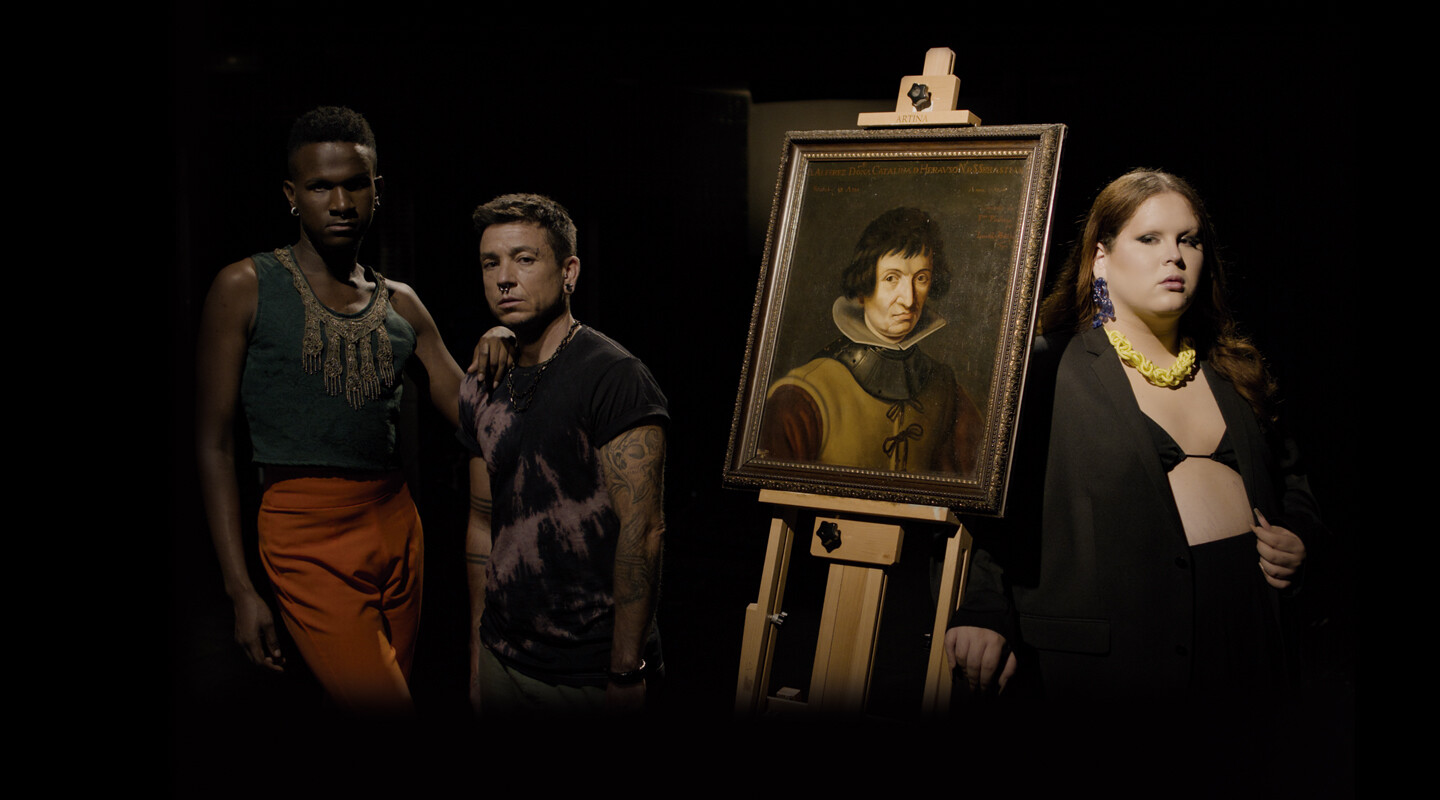A Voice for Erauso. Epilogue for a Trans Time
March 10–September 25, 2022
Arriquíbar Plaza, 4
48010 Bilbao
Spain
T +34 944 01 40 14
info@azkunazentroa.eus
Curated by Paul B. Preciado.
Azkuna Zentroa—Alhóndiga Bilbao presents the exhibition A voice for Erauso. Epilogue for a trans time with the work of the artistic collective Cabello/Carceller and curated by Paul B. Preciado, a project that links the construction of historical narratives with contemporary queer and trans politics.
Through their interdisciplinary work, Cabello/Carceller use installation, performance, fictional accounts and video to question the hegemonic codes of representation in visual practices and propose critical alternatives.
In this case, the project started with the artists’ encounter with a portrait that is as fascinating as it is unusual: the painting that (probably) Juan van der Hamen made of Catalina de Erauso dressed as an lieutenant of the Spanish colonial navy from 1625–1628 and which today belongs to the Kutxa collection. Erauso, who was born in Donostia in 1592 and was assigned female sex and given the name Catalina, is often better known as “the Lieutenant Nun”. This is partly due to the autobiography, in which Erauso narrates the adventures of a young girl who escaped from a convent “dressed as a man” and later travelled as a soldier and merchant (under the names of Francisco de Loyola, Juan Arriola, Alonso Díaz Ramírez de Guzmán… and Antonio Erauso, among others) to the lands colonised by the Spanish empire from Chile to Mexico.
As Paul B. Preciado, curator of the exhibition, notes, “the portrait of Erauso as a man could be considered one of the first “trans” portraits in the history of Baroque art” although that notion is anachronistic since it did not exist until the 19th century. But, he adds, “Erauso is, like their portrait, a figure of shadows.” “Against the completely black background of the oil painting, a stern face emerges, but with an unsettlingly gentle gaze that cannot be described as masculine or feminine. However, their involvement in the genocide of the Mapuche and their position in the colonial market make them an awkward figure in trans history”. For this reason, the aesthetic of the exhibition is, like Erauso’s portrait, that of chiaroscuro.
For this artistic project, Cabello/Carceller have created a new “portrait” of Erauso, who is called into question by a gallery of new trans figures. This audiovisual piece, produced by Azkuna Zentroa, was filmed by Doxa Producciones and has Alberto sin Patrón as costume designer and Mursego on music.
The exhibition is thus constructed as an analogue-digital portrait gallery where Erauso (both the historical portraits of 1625–1628 and the new portrait by Cabello/ Carceller) meet other representations of artist’s previous work, including Autorretrato como fuente,(2001); Archivo: Drag Modelos (2007–underway); Movimientos para una manifestación en solitario (2021); or Lost in Transition_un poema performativo (2016).
The exhibition project is completed with a public programme of activities, the exhibition catalogue and an educational programme of workshop visits.


